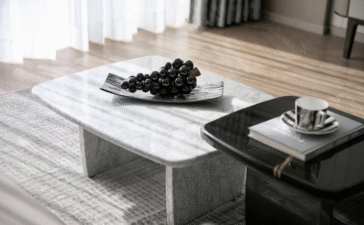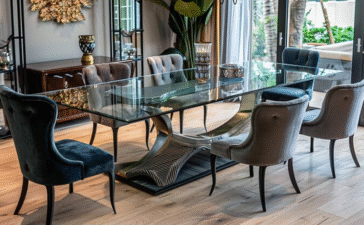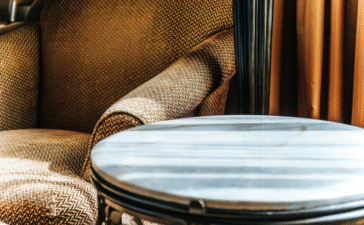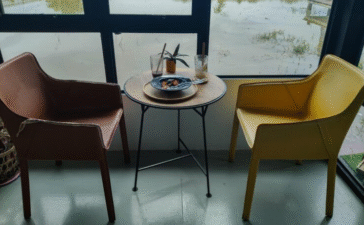When designing a kitchen, the choice of cabinetry is fundamental. It sets the tone for the entire space, influencing both its functionality and aesthetic. Among the many options available, walnut kitchen cabinets stand out for their timeless appeal and inherent elegance. The rich, warm tones and distinctive grain patterns of walnut wood create a sense of luxury and sophistication that few other materials can match. It’s a choice that speaks to a desire for quality, durability, and a connection to natural beauty.
This guide will explore every facet of walnut kitchen cabinetry. We will cover the unique characteristics of walnut wood, its many benefits, and a range of design ideas to inspire your project. As experts in kitchen design and cabinetry, we will also provide practical advice on maintenance, cost considerations, and how walnut compares to other popular wood options. By the end of this article, you will have the knowledge needed to decide if walnut is the right choice for your dream kitchen.
What Are Walnut Kitchen Cabinets?
Walnut kitchen cabinets are crafted from the wood of the walnut tree, a hardwood renowned for its strength, straight grain, and rich, chocolate-brown color. The wood’s tone can range from a pale brown in the sapwood to a deep, dark brown in the heartwood, often featuring beautiful swirls, burls, and dark streaks that make each cabinet unique. This natural variation is one of the primary reasons designers and homeowners cherish walnut.
There are a few different forms of walnut used in cabinetry. Solid walnut kitchen cabinets are made entirely from planks of walnut wood, offering unparalleled durability and a classic, substantial feel. Another popular option is walnut wood veneer, which consists of a thin layer of real walnut applied over a stable substrate like MDF or plywood. This method makes the luxurious look of walnut more accessible and is also an eco-friendly choice as it uses less of the valuable hardwood. Finally, engineered walnut cabinets may use a combination of solid wood frames and veneer panels, providing a balance of cost, stability, and aesthetic appeal. Each type offers the distinctive beauty of walnut, allowing for flexibility in both budget and design.
Benefits of Choosing Walnut Kitchen Cabinets
Opting for walnut kitchen cabinetry brings a host of advantages that justify its esteemed reputation. One of the most significant benefits is its timeless visual appeal. The deep, warm colors and complex grain of walnut wood lend an air of natural elegance that complements a wide array of kitchen styles, from ultra-modern to classic traditional. This versatility ensures that your kitchen will not feel dated in a few years; instead, it will mature gracefully, acquiring a rich patina over time.
Beyond aesthetics, walnut is known for its impressive durability and strength. As a dense hardwood, it stands up well to the daily demands of a busy kitchen, showing strong resistance to dents and wear. This makes durable walnut cabinets a practical, long-term investment for your home. Furthermore, walnut kitchen cabinets instantly add a layer of luxury and significant aesthetic value to your property. The material is synonymous with high-end design, and its inclusion can elevate the overall perception and resale value of your home. Choosing luxury walnut kitchen cabinets is a statement of quality and sophisticated taste that resonates throughout the entire living space.
Design Ideas for Walnut Kitchen Cabinets
The versatility of walnut allows it to be a centerpiece in various design schemes. For a contemporary look, modern walnut kitchen cabinets often feature flat-panel doors and minimalist hardware. This sleek, clean-lined approach highlights the wood’s natural grain, allowing its inherent beauty to take center stage. Paired with polished chrome or matte black fixtures, modern walnut cabinetry creates a look that is both warm and strikingly sophisticated.
For those who prefer a more classic aesthetic, traditional walnut cabinet designs are an excellent choice. These styles may include raised panel doors, intricate moldings, and decorative hardware like antique brass or bronze knobs. The rich, dark tones of the walnut wood feel right at home in a traditional setting, evoking a sense of heritage and enduring craftsmanship. Walnut also pairs beautifully with other materials. Imagine a walnut kitchen with granite countertops in a light cream or white, creating a stunning contrast. Similarly, setting walnut cabinets against crisp white walls makes the wood’s color pop, while integrating stainless steel appliances adds a touch of modern sleekness that complements the organic texture of the wood.
How to Incorporate Walnut Cabinets in Your Kitchen Layout
Properly incorporating walnut kitchen cabinets into your layout can enhance the functionality and feel of your space. To maximize a sense of openness, even with darker wood, consider using upper cabinets with glass-front doors or incorporating open shelving. This technique breaks up the visual weight of the wood and provides opportunities to display decorative items, contributing to a lighter, more airy atmosphere in your space-saving kitchen designs.
A walnut kitchen island is a fantastic way to introduce this luxurious wood without overwhelming a smaller space. It can serve as a stunning focal point, grounding the room’s design while providing valuable counter and storage space. You can pair a walnut island with lighter-colored perimeter cabinets to create a beautiful, dynamic contrast. The style of the cabinet doors also plays a crucial role. Flat-panel doors offer a modern, seamless look that is easy to clean. Shaker-style doors provide a timeless, transitional appeal that bridges modern and traditional styles. While raised-panel doors lend a more formal, classic elegance. Exploring these kitchen cabinet door styles will help you tailor the look of your walnut cabinetry to your exact vision.
Cost of Walnut Kitchen Cabinets
Understanding the cost of walnut cabinets is essential for planning your kitchen renovation. Walnut is considered a premium hardwood, and its price reflects its quality and desirability. On average, you can expect to pay between $100 to $400 per linear foot for walnut cabinets, but this can vary significantly. The final price depends on whether you choose stock, semi-custom, or fully custom cabinets.
Several factors influence walnut cabinetry pricing. Solid walnut will be more expensive than walnut veneer. The complexity of the design, the type of finish applied, and the size of your kitchen will also impact the total cost. Custom features, such as intricate door styles, built-in organizers, or specialized hardware, will further increase the price. To manage your budget effectively, consider a blend of materials. For example, using a walnut veneer for cabinet boxes and solid walnut for the doors can provide the high-end look you desire at a more moderate price point. Seeking affordable walnut kitchen cabinets might involve opting for simpler designs or looking for promotions from reputable suppliers.
How to Maintain and Care for Walnut Kitchen Cabinets
Properly maintaining walnut cabinets is key to preserving their beauty for years to come. For regular upkeep, simply wipe the surfaces with a soft, lint-free cloth dampened with water and a mild dish soap. Always wipe in the direction of the wood grain and dry the cabinets immediately with a separate soft cloth to prevent water spots or damage. Avoid using harsh abrasive cleaners, ammonia-based products, or scouring pads, as these can scratch the wood and strip the finish.
When learning how to clean walnut kitchen cabinets, consistency is crucial. Address spills, especially those from acidic foods or oils, as soon as they happen to prevent staining. For deeper cleaning or to restore shine, you can use a high-quality wood cleaner or polish specifically designed for finished wood. Over time, if your cabinets show signs of wear, such as scratches or a dulling finish, refacing walnut cabinets is an option. This can involve professionally sanding and refinishing the surfaces to restore their original luster. For minor scratches, a touch-up marker that matches the wood’s stain can be an effective and simple solution.
Walnut Kitchen Cabinets: Environmental Impact and Sustainability
As consumers become more environmentally conscious, the sustainability of materials is an important consideration. When selecting walnut kitchen cabinets, it’s vital to ensure the wood is sourced responsibly. Look for sustainable walnut cabinets from manufacturers who adhere to ethical forestry practices. This ensures that the walnut is harvested in a way that does not contribute to deforestation and allows forests to regenerate naturally.
One of the best ways to guarantee you are making an eco-friendly choice is to select cabinets made from FSC-certified walnut. The Forest Stewardship Council (FSC) is an international organization that sets standards for responsible forest management. An FSC certification means the wood can be traced back to a well-managed forest. Another sustainable option is to use walnut veneer. Since veneer uses only a thin layer of the hardwood, it maximizes the use of a single log, reducing the overall number of trees that need to be harvested. This makes veneer an excellent choice for achieving the look of walnut while minimizing your environmental footprint and choosing eco-friendly kitchen cabinets.
Also check: “White Oak Kitchen Cabinets“
Common Issues with Walnut Kitchen Cabinets and How to Avoid Them
While walnut is durable, it is not impervious to damage. One common issue is fading or discoloration caused by prolonged exposure to direct sunlight. The UV rays can lighten the wood’s rich color over time. To prevent this, consider using window treatments like blinds, curtains, or a UV-blocking film on your kitchen windows. Minor scratches on walnut wood are another concern, especially in a high-traffic area. Using cutting boards, avoiding placing sharp objects directly on surfaces, and being mindful during daily activities can minimize this risk. To repair walnut cabinets with minor scratches, a wax repair stick or a stain-filled touch-up marker can be very effective.
Like all wood products, walnut is susceptible to warping or cracking if exposed to extreme fluctuations in humidity or direct contact with water. Protecting walnut kitchen cabinets from moisture is crucial. Use exhaust fans to manage steam from cooking, wipe up spills promptly, and ensure there are no slow leaks from sinks or dishwashers. Maintaining a stable indoor humidity level will help prevent the wood from expanding and contracting excessively, preserving the integrity of your cabinets for the long term.
Walnut Kitchen Cabinets vs. Other Wood Options
When choosing the best wood for kitchen cabinets, it’s helpful to compare walnut to other popular options like oak, maple, and cherry. Compared to walnut vs oak cabinets, walnut typically has a finer, straighter grain and a darker, more uniform color, while oak is known for its prominent, coarse grain pattern. In the walnut vs maple kitchen cabinets debate, maple is much lighter in color and has a very subtle grain, offering a more neutral backdrop. Whereas walnut provides a bold, dramatic statement. Cherry wood is perhaps the closest competitor in color, but it tends to have a reddish hue that darkens significantly over time, whereas walnut’s brown tones are more stable.
The primary advantages of walnut over these other woods are its unique aesthetic and luxurious feel. The depth of its color and the elegance of its grain are difficult to replicate. While it may come at a higher price point, its superior visual appeal and strong durability make it a worthwhile investment for those seeking to create a truly high-end kitchen. The distinct character of walnut makes it a premium choice that stands apart in the world of cabinetry.
Realizing Your Dream Kitchen
Walnut kitchen cabinets represent a perfect fusion of natural beauty, lasting durability, and timeless style. Their rich color and elegant grain can elevate any kitchen design, creating a space that feels both luxurious and welcoming. From modern minimalist layouts to traditional, ornate designs, walnut offers the flexibility to bring your vision to life. By investing in quality material and committing to proper care, you can enjoy the sophistication and warmth of walnut cabinetry for many decades.
If you are ready to explore the possibilities of a walnut kitchen. We encourage you to browse design galleries for inspiration or consult with a professional kitchen designer. They can help you navigate the options and create a space that is perfectly tailored to your home and lifestyle.
Frequently Asked Questions
Are walnut cabinets worth the investment?
Yes, for many homeowners, walnut cabinets are absolutely worth the investment. Their durability means they will last for decades, and their timeless style ensures they won’t feel outdated. Furthermore, high-end materials like walnut can significantly increase the resale value of your home, making them a sound financial choice in the long run.
Can walnut cabinets be painted?
While you can technically paint walnut cabinets, it is generally not recommended. The primary appeal of walnut is its beautiful natural grain and rich color, which would be completely covered by paint. If you desire a painted finish, it is more cost-effective to choose a less expensive wood, like maple or poplar, which provides a smoother surface for painting.
How long do walnut cabinets last?
With proper care and maintenance, solid walnut cabinets can last for 50 years or even longer. Walnut is a strong, dense hardwood that resists wear and tear well. Regular cleaning and protecting the wood from moisture and excessive sunlight will ensure your cabinets remain in excellent condition for a lifetime.
Does walnut wood darken over time?
Walnut is relatively stable in color compared to woods like cherry. However, all woods react to light. Over time, walnut may lighten slightly, especially with exposure to direct sunlight, developing a warmer, more honey-toned patina. This mellowing is a natural process that many people find adds to the wood’s character.
Is walnut a good choice for modern kitchens?
Walnut is an excellent choice for modern kitchens. Its clean, straight grain and rich color pair beautifully with the minimalist aesthetic. Flat-panel walnut cabinets, often designed without visible hardware, create a sleek, seamless look that is both warm and sophisticated, making it a favorite among contemporary designers.












